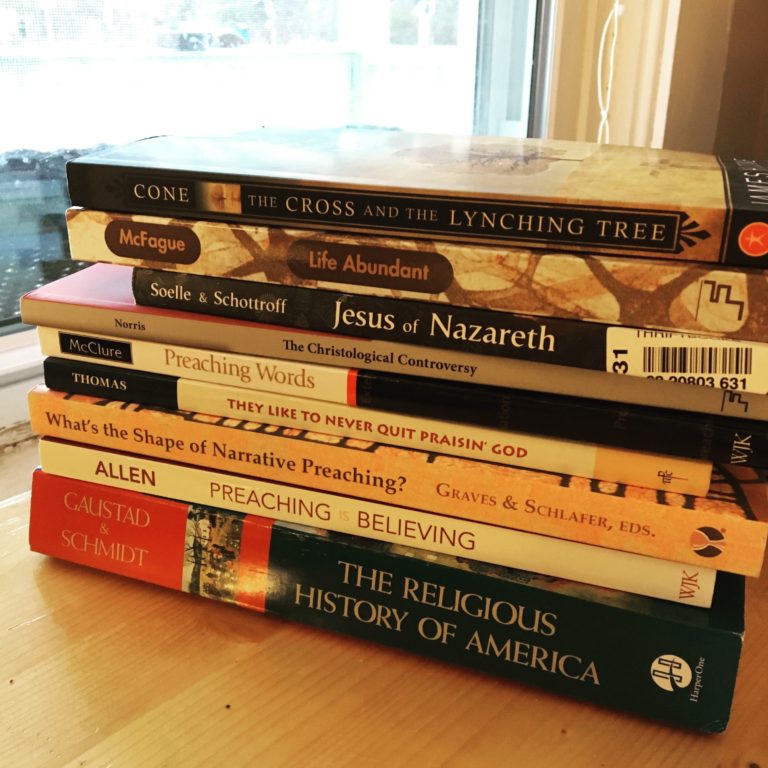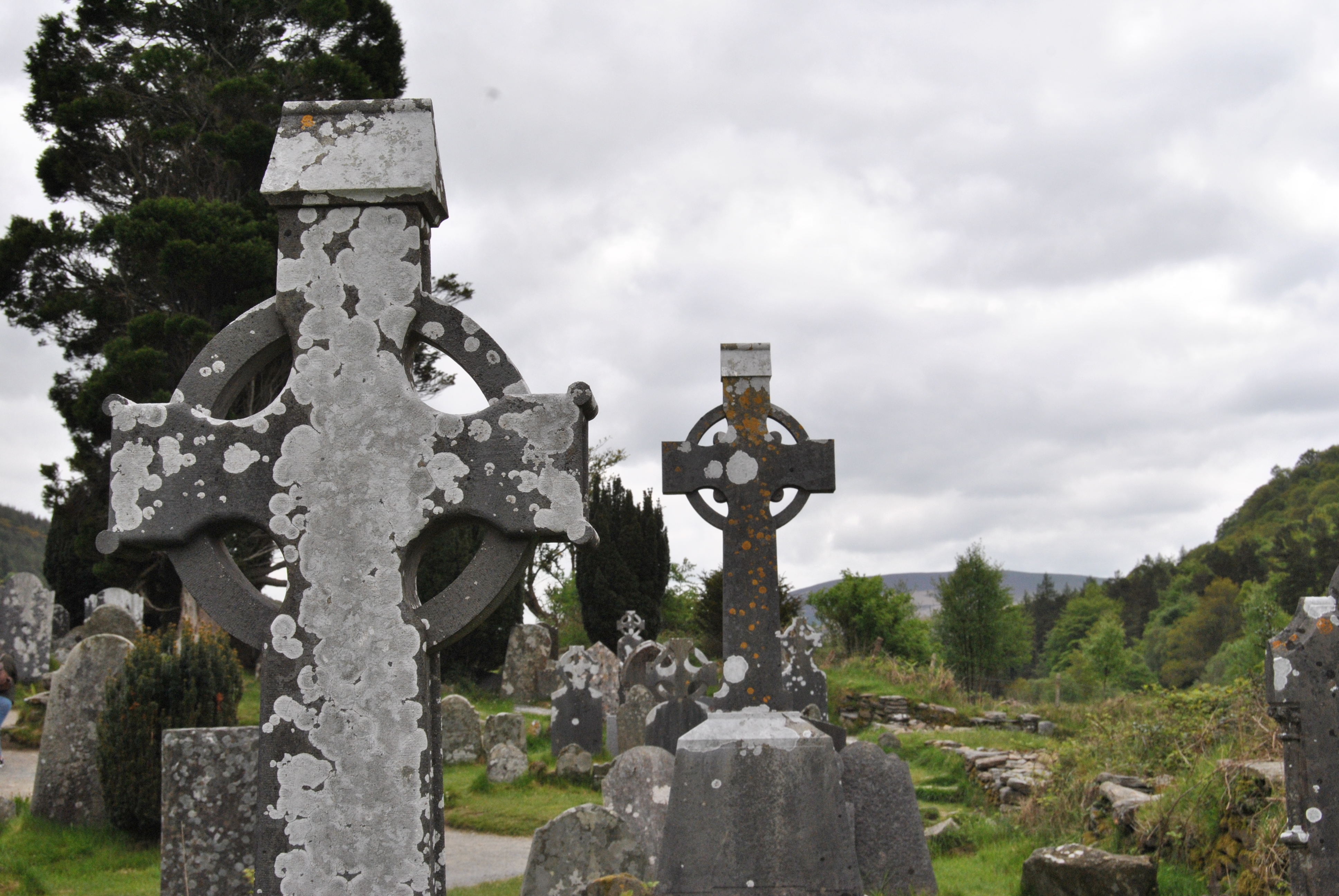
A look at this semester’s book list, minus my 799-page behemoth for my history class.
As much as I love to read, I don’t always have the best comprehension of what my eyes translate as they scan a page.
With sometimes as many as six books assigned per class, I can’t read them all word for word. And with critical in-class discussions to follow, I can’t afford not to, either.
Highlighting has helped aid in my reading retention (as I skim when needed), even if I highlight funny stuff or things that shout out “That’ll preach!”
Below are a few excerpts that stuck out to me this semester, including a bit of their context and light sourcing information:
Regarding the emotional and spiritual manipulation tactics used in sermons by Great Awakening preachers such as Jonathan Edwards:
“A delicate proportion was involved; the Terrors had to last long enough to stir the most secure, but not so long as to bring mass insanity or suicide.”
Essay by Cedric Cowing, 1971, reprinted in Critical Issues in American Religious History: A Reader edited by Robert Mathisen (an illuminating 799 page book I hauled around for 15 weeks).
Regarding changing American Christian theology from a personal, capitalistic theology, to one that centers on communal, ecological theology:
“Theology by relatively comfortable North American Christians ought not to focus on personal salvation, in this world or the next, but on lifestyle limitations, on developing a philosophy of ‘enoughness,’ and realizing that the cruciform way of Christ means making sacrifices so that others might live.”
Life Abundant by Sally McFague (an incredible read that completely challenges the capitalistic economic paradigm in preference for an economy that favors the flourishing of all).
Regarding choosing the good life:
“The raw material of a golden calf is almost never a bad thing.”
Sermon called “Choose This Day” printed in a book called Gospel Medicine, both by Barbara Brown Taylor (a fun sermon full of Taylor’s personality based on the text Deuteronomy 30:19-20).
Regarding the connection between the cross and the lynching tree, and God’s solidarity with the African American population which was victimized and terrorized for more than 70 years following the end of the Civil War:
“Because God was present with Jesus on the cross and thereby refused to let Satan and death have the last word about his meaning, God was also present at every lynching in the United States. God saw what whites did to innocent and helpless blacks and claimed their suffering as God’s own. God transformed lynched black bodies into the recrucified body of Christ. Every time a white mob lynched a black person, they lynched Jesus. The lynching tree is the cross in America. When American Christians realize that they can meet Jesus only in the crucified bodies in our midst, they will encounter the real scandal of the cross.”
The Cross and the Lynching Tree by James Cone (a profound look at Black Theology, connecting two unlikely symbols to salvation, hope and reconciliation of races).
All books mentioned above can be found on www.amazon.com.
~Dusty
